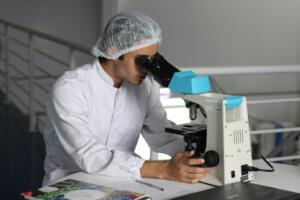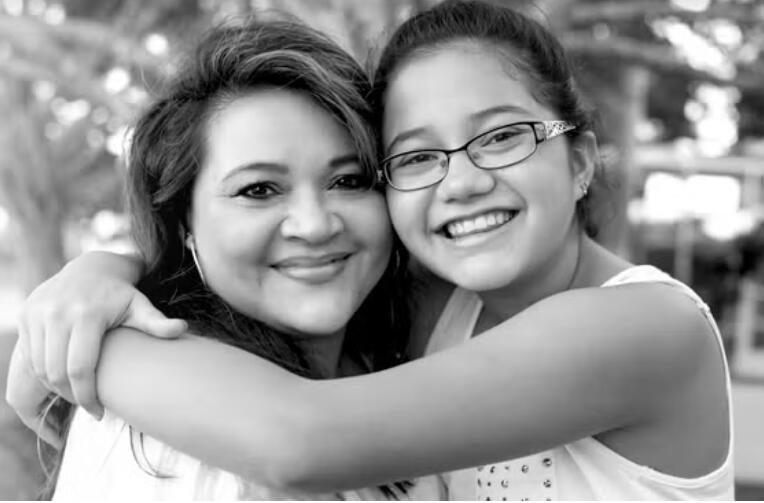Donation Essentials Blog
What is Tissue Matching? Understanding Donor Tissue Compatibility
Tissue matching, also known as histocompatibility testing, represents an important element related to the transplantation of organs and tissues. It helps define compatibility between tissues of the donor and the recipient to decrease chances of transplant rejection. The immune system might think the new tissue is a foreign body and launch an attack on it. This endangers the transplant. By exactly matching tissues, we increase the success rates of transplants and improve overall results in patients as well as the lifespan of the transplanted organs or tissues.
Historical Context and Development
The history of tissue matching is rich with pivotal scientific breakthroughs. In 1901, Karl Landsteiner discovered blood groups. This finding paved the way for both safer blood transfusions and organ transplants. It also reiterated that it was mandatory to try to get compatibility between the donor and recipient to avoid harmful immune responses.
Now, fast forward to the mid-20th century. This is when identification of the Major Histocompatibility Complex (MHC) and human leukocyte antigens (HLA) transformed the field. With all this came greater insights into the genetic underpinnings of immunity and rejection. This led to more informed matching of donors and recipients. Important breakthroughs at this time included the perfection of HLA-typing techniques and enhancement in compatibility testing.
In the 1980’s the introduction of immunosuppressive treatments, such as cyclosporine, radically changed transplant medicine. It con immune response to an extent that reduced probability of rejection even if correct matches were less likely. Modern molecular techniques like Polymerase Chain Reaction (PCR) and Next Generation Sequencing(NGS) have advanced this typing. The minutest of disparities in the two tissues are no longer a hurdle in the transplantation’s success.
The Science Behind Tissue Matching
The crux of tissue matching is the determination of HLA proteins residing on the cell surface. These major proteins play a vital role in enabling the immune system to distinguish between self and non-self cells. Major classes of HLA include Class I, which includes HLA-A, HLA-B, HLA-C, and Class II, which includes HLA-DR, HLA-DQ, HLA-DP. The HLA molecules from each person are inherited from his or her biological parents, hence causing a very individual HLA profile.
HLA typing identifies the exact types (alleles) of HLA genes for both donors and recipients. An ideal match is one in which all the major HLA loci in the donor should match with those of the recipient. However, full matches are seldom available and partially matched, where some but not all HLA loci matches, are usually done. The closer the match, the lesser the chances of donor rejection and hence the low doses of immuno-suppressive drugs required by the recipient.

Types of Tissue Matching Tests
Various tests on tissue matching are to assess compatibility between tissues that provide essential information regarding donor-recipient pairs:
- Blood Type Matching: The blood group of both donor and recipient should be compatible with each other, as it will decrease the possibility of hemolytic reactions and helps prevent graft rejection.
- HLA Typing: HLA typing will identify all the HLA alleles in the donor and the recipient. It is one of the key steps to measure immune compatibility and the risk of rejection.
- Crossmatching: This is a test in which a sample of the recipient’s serum is mixed with cells from the donor to see if there are antibodies that would react against the donor tissue. A positive crossmatch would mean certain antibodies, thus reflected as a higher risk of rejection.
- Panel Reactive Antibody (PRA) Test: The test is carried out to detect the strength of anti-HLA antibodies found within the recipient’s blood. A high level in PRA indicates that the recipient has been sensitized against a number of HLA types and, thus, the opportunity for finding a matched donor further diminishes.
Together, these tests put up a complete evaluation on matching the donor with recipient criteria.
Importance of Tissue Matching in Transplantation
Tissue matching ensures the success of organ and tissue transplants. Accurate tissue matching significantly reduces the risk of acute rejection, which occurs within the first few weeks after the transplant. Acute rejection occurs when the patient’s immune system recognizes the transplant as foreign and starts to act against it. This can range in severity with and, if not immediately treated, ends in the failure of the transplant.
Accurate tissue matching also ensures the patient can be given the lowest possible doses of the drugs. In some instances, these drugs may be required for their immune system to be deterred from attacking the new organ. Sometimes, these drugs come with significant side effects, like a higher risk of infections and other long-term health issues. A better tissue match means lower doses of these drugs, enhancing the patient’s overall quality of life.
Problems and Limitations
Even with all these breakthroughs, there are still some challenges tissue matching faces. The most significant problem is the lack of a donor who fits these criteria, especially in cases where HLA types are rare. In such a situation, it becomes hard to find a matching donor, especially for highly sensitized patients. These patients often have developed antibodies to more than one HLA type through previous transplants, blood transfusions or pregnancies.
No matter how perfect any match can be established, the risk of rejection and other post-transplant complications remain. The sophistication of the immune system, coupled with the enormous number of factors leading to compatibility, means certain aspects of immune response are still not fully understood. Ongoing research is focused on better donor matching strategies and an understanding of genetic and immunological determinants of successful transplantation and organ rejection.
Ethical Considerations
There are also several vital ethical issues related to tissue matching and organ transplantation. Donor organs are allocated after concerns of medical urgency and compatibility are weighed. Ethical guidelines and regulations ensure organs are allocated equitably, giving all patients opportunity for a transplant.
Informed consent is another key ethical concern in tissue matching. It’s essential donors and their families fully understand the donation process and its implications, including the risks and potential outcomes. The ethical guidelines ensure the information concerning the donor and the recipient is confidential, upholding the wishes of the donor and their family.
Advancements in Tissue Matching Technology
With high-tech advancements in technology, new levels of accuracy and tissue matching efficacy have considerably improved. Next-generation sequencing leads to a high resolution of HLA typing, giving sequences even for the tiniest differences of HLA genes which are critical to the degree of compatibility. This technology has been useful in developing high-resolution HLA typing, leading to exact matches.
Machine learning algorithms are now emerging as powerful tools for predicting compatibility accurately. These algorithms can identify the best possible donor-recipient pairs based on large data sets, which include genetic, clinical, and immunological information. This novel approach increases the donor pool with the expectation of a dramatic increase in transplantation success. Digital imaging and 3D modeling increases the level of precision in tissue matching.
International Perspectives on Tissue Matching
Internationally, protocols for tissue matching vary. It’s based on the health systems and structures in place, the available infrastructure, and cultural norms. In countries with effective organ donation systems, donor tissue retrieval and allocation occur with increased ease. At the other end of the spectrum, few areas face more challenges. Some resources in these areas are scant and infrastructure is less developed. Cultural view of organ donation and transplant equally determine the rates of availability of donors and acceptability for such procedures.
Measures to decrease the imbalances involve foreign joint ventures. that create universal tissue matching standards and also enhance access for suitable organs worldwide. Organizations such as the World Health Organization (WHO) and the Global Alliance for Transplantation are in the lead in disseminating best practices and enhancing transplant outcomes on a global basis. These include efforts in knowledge sharing, the development of international registries, and public awareness to drive home the importance of organ donations.
Educational and Support Resources
A large number of available resources in education and support are available. This includes a wealth of information from tissue matching to stages involved in the actual transplant procedure. Support groups and organizations, such as Donor Alliance, empower people with knowledge to know their options and make wise decisions.
Support groups provide a place where families and patients get to share their experiences and learn from other families who have undergone similar experiences. Access to these is necessary to provide the way ahead to the patients and their family to move on further in the extensive process and immense strain of organ transplantation.
Future Directions and Research
The future for tissue matching is bright. Continued research is helping further fine-tune the matching techniques and expand the pool of available donor tissue. Personalized medicine—steering healthcare to fit the individual genetic constitution of a patient—will be instrumental in tissue matching. In view of a patient’s genetic profile, health providers will identify the most compatible donor and then customize immunosuppressive treatment.
Moreover, advancements in synthetic biology and tissue engineering are paving the way for the creation of synthetic organs and tissues, presenting new horizons for transplantation. These innovative technologies have the potential to transform organ transplants, making them more accessible and successful.
Unique Aspects of Tissue Matching
Tissue matching is fundamental to the success of transplants, ensuring both patient safety and the long-term success of transplanted organs and tissues. Ongoing advancements in tissue matching methods and technology are crucial to addressing the increasing need for organ and tissue transplants. With ongoing research shedding light on immune compatibility and rejection mechanisms, the future of tissue matching looks brighter. It offers even more accuracy and success in transplantation.
Tissue matching is one of the fundamental bases for a successful transplant. It promises patients optimal results and extends the survival time of transplanted organs and tissues. Further, this sphere offers new hope and opportunity to save and heal more lives through donation and transplantation.


